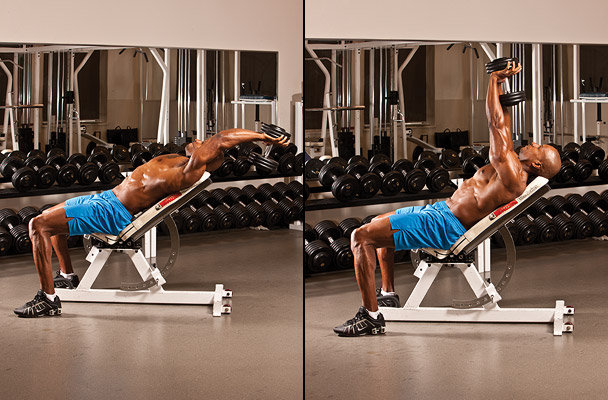
We generally consider breathing to be one of the least utilized tools when it comes to generating force during a workout.


Grab the dumbbell with both arms comfortably and lift it above your chest, keeping the elbows slightly bent.Place your feet close to one another and just below the knees, at a 90-degree angle.Pick an appropriate weight and put it on the bench press, then lie down with your upper back (shoulder line) on the side of the bench press.Here are the exact execution steps towards the perfect dumbbell pullover Dumbbel pullover exercise: Execution steps Then, the barbell is pulled up slowly, focusing the tension on the lats.

We then observe a longer range of motion, as the elbows can slightly pass the shoulder line, as the barbell is going all the way down carefully. The barbell is grabbed at about shoulder width, with the elbows slightly bent and flared. This serves as a stabilizing and stretching movement that helps us keep our upper back on the bench, without taking the risk of falling back. With this version, we observe a downwards movement of the hips while we let the barbell down and behind the head. With this version of the exercise, we stretch out the chest and the lats, and contract the chest on the upper portion, along with the triceps. When pushing up, we aim to drive the tension with a pushing force and a nearly locked out elbow, pushing the dumbbell over the head, while the elbows are closer to the body and not flared. We also see that the range of motion is relatively short, due to the fact that the elbows do not pass the shoulder level. We keep the abdominals tense and steady and the position remains static. With the pushing version of this exercise, done with a dumbbell, we do not observe a movement of the hip area. If, however, we pull, we will greatly engage the back muscles or in other words, the lats. Knowing that the shoulders, chest and triceps are pushing muscle groups, we can easily say that if we push during the pullover, those 3 will be the main target. PullingĪs a matter of fact, this exercise can be done in multiple ways, depending on the muscle group that you want to target. The rest of the muscle groups involved work in synergy and stabilize the joints involved in the movement. The pectoral (chest) muscles and the back (latissimus) muscles are dynamically contracted during the exercise. If you experience pain during the exercise, even if your form is correct, then it would be more than good to cease doing the exercise.

If you have past trauma in those areas, proceed to the exercise with a proper warm up beforehand and nonetheless, precaution during the exercise itself. We also do not recommend this exercise to people with injuries, as it requires perfectly healthy wrists, elbows, shoulders and spine. This is NOT a beginners’ exercise, which is why we recommend you not to do it if you are just starting to get into training. The exercise targets a wide variety of muscle groups, including the lats, chest, triceps, shoulders and pretty much the whole upper body, in one way or another (actively or passively). The pullover is a multi-joint exercise, best suited for intermediate and advanced athletes.


 0 kommentar(er)
0 kommentar(er)
